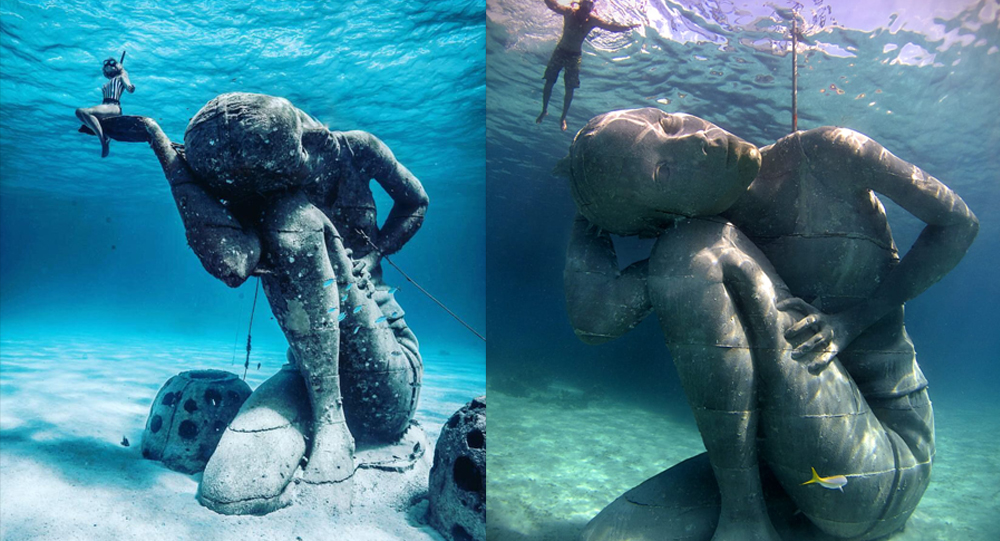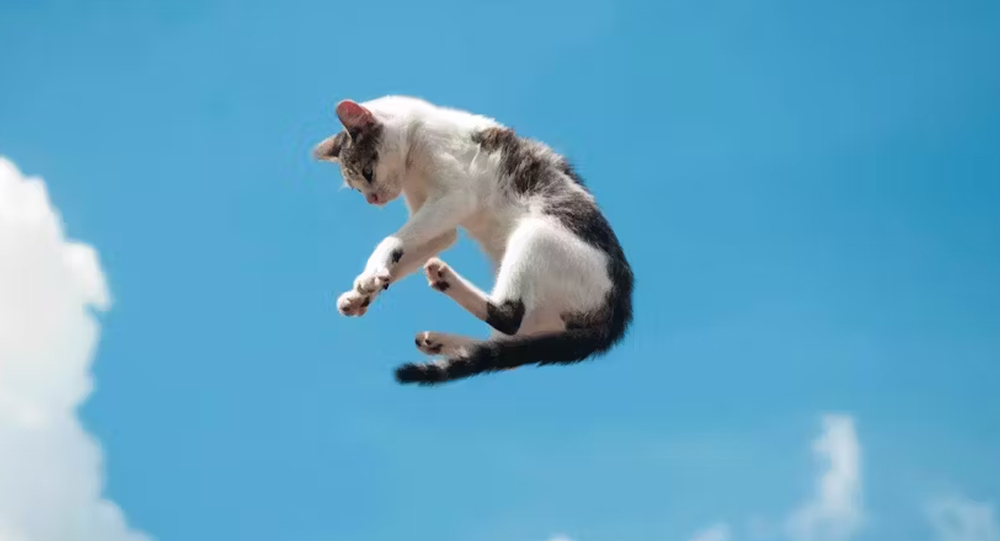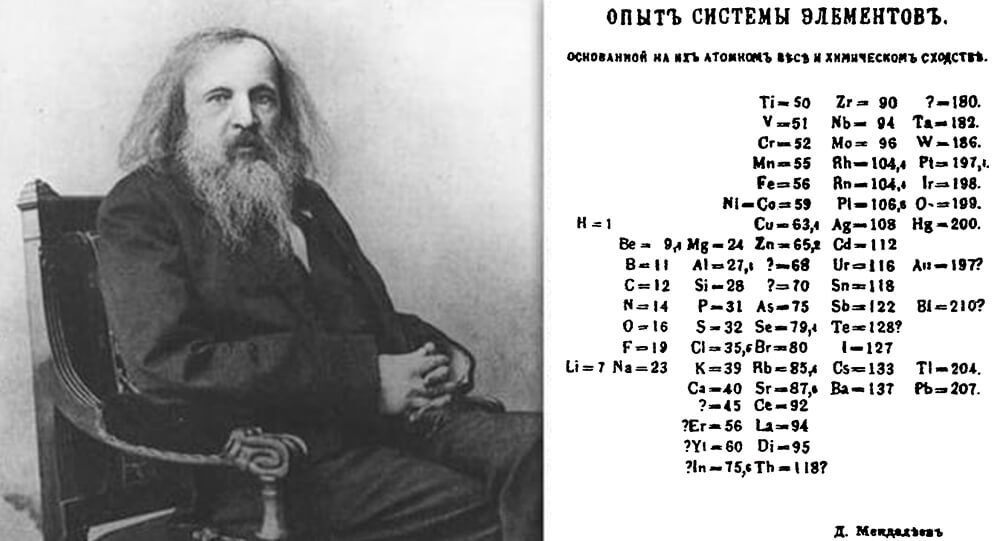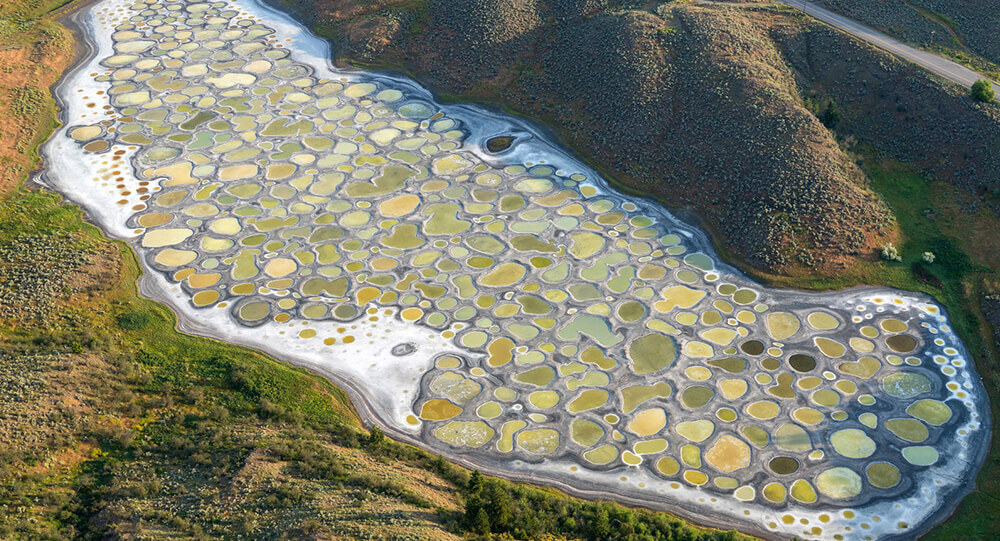

Ocean Atlas: Exploring the World’s Largest Underwater Sculpture in the Bahamas
Nestled beneath the crystal-clear waters off the western coast of New Providence Island in Nassau, Bahamas, lies a breathtaking marvel that merges art, culture, and marine conservation. Known as Ocean Atlas, this monumental underwater sculpture holds the title of the largest single underwater sculpture ever installed. It depicts a young Bahamian girl bearing the immense weight of the ocean on her shoulders, a powerful symbol inspired by the ancient Greek myth of Atlas, who carried the heavens.
This extraordinary work of art is more than just a visual spectacle; it represents a profound connection between humanity and the ocean, highlighting the importance of marine preservation while offering a unique attraction for divers and tourists alike.
The Artistic Vision Behind Ocean Atlas
Ocean Atlas was created by renowned British sculptor Jason deCaires Taylor, who is celebrated for his pioneering work in underwater sculpture parks around the world. Taylor’s art is distinctive for its fusion of sculpture, environmentalism, and marine biology, often using his installations to promote coral reef restoration and ocean conservation.
The sculpture portrays a 12-foot-tall Bahamian girl crouched in a seated position, her arms stretched downward as she supports the weight of the ocean above. The figure’s expression is one of serene strength and resilience, symbolizing the burden that the ocean-and by extension, the planet-carries. The piece draws a direct parallel to the Greek Titan Atlas, who was condemned to hold up the sky for eternity.
However, Taylor’s Ocean Atlas adds a contemporary and local twist: rather than a mythological figure, it is a real representation of a Bahamian child, emphasizing the human connection to the sea and the responsibility to protect it for future generations.
Location and Accessibility
Ocean Atlas is located approximately 60 feet (18 meters) underwater near Clifton Heritage National Park, off the western coast of New Providence Island. The site is accessible to recreational divers and snorkelers, making it a popular destination for tourists seeking an extraordinary underwater experience.
The sculpture’s placement on the ocean floor not only creates a surreal underwater gallery but also provides a habitat for marine life. Over time, the sculpture has become encrusted with coral and sponges, transforming it into an artificial reef that supports biodiversity.
Construction and Materials
Constructing the world’s largest underwater sculpture was a massive undertaking that combined artistry with engineering and environmental science. Ocean Atlas weighs approximately 60 tons and measures 18 feet (5.5 meters) tall, making it a colossal figure that commands attention beneath the waves.
The sculpture is made from pH-neutral marine-grade cement, a material specially designed to encourage coral growth and withstand the harsh marine environment. This eco-friendly material ensures that the sculpture not only endures but actively contributes to the restoration of the surrounding coral reef ecosystem.
The installation process involved careful planning and collaboration with marine biologists and local authorities to minimize environmental impact. The sculpture was transported in sections and assembled underwater by a team of divers and engineers.
Environmental Impact and Coral Reef Restoration
One of the most remarkable aspects of Ocean Atlas is its dual role as both an artwork and a tool for marine conservation. Coral reefs worldwide face severe threats from climate change, pollution, and overfishing, leading to widespread degradation.
By installing Ocean Atlas on the ocean floor, Taylor and his team created a substrate for coral larvae to attach and grow, helping to regenerate the damaged reef. The sculpture’s textured surface provides an ideal environment for corals, sponges, and other marine organisms to colonize, promoting biodiversity and enhancing the local ecosystem.
Since its installation, Ocean Atlas has become a thriving artificial reef, attracting fish, sea turtles, and other marine creatures. This fusion of art and ecology exemplifies how creative solutions can address environmental challenges.
Cultural Significance and Community Engagement
Ocean Atlas also holds deep cultural significance for the Bahamas. By depicting a Bahamian girl, the sculpture celebrates local identity and heritage, reminding viewers of the intimate relationship between the island’s people and the sea.
The project was developed in partnership with The Bahamas Reef Environmental Educational Foundation (BREEF) and the Nassau government, highlighting a commitment to environmental education and sustainable tourism. The sculpture serves as a platform to raise awareness about marine conservation and the importance of protecting the Bahamas’ natural resources.
Local communities have embraced Ocean Atlas as a symbol of pride and stewardship, and it has become a focal point for educational programs and eco-tourism initiatives.
Visitor Experience: Diving with Ocean Atlas
For divers and snorkelers, visiting Ocean Atlas is an unforgettable experience. The sculpture’s massive scale and serene presence create a surreal atmosphere, as if encountering a giant guardian of the sea.
Dive operators in Nassau offer guided trips to the site, often combined with visits to nearby coral reefs and marine parks. The relatively shallow depth makes it accessible for divers of intermediate skill levels, while snorkelers can also view the sculpture from the surface on calm days.
Photography enthusiasts are drawn to Ocean Atlas for its dramatic underwater visuals, where sunlight filters through the water and illuminates the sculpture’s contours, creating a magical interplay of light and shadow.
Fun Facts and Trivia About Ocean Atlas
- Largest Single Underwater Sculpture: Ocean Atlas holds the Guinness World Record for the largest single underwater sculpture ever installed.
- Weight: The sculpture weighs approximately 60 tons.
- Height: It stands 18 feet (5.5 meters) tall underwater.
- Material: Made from pH-neutral marine-grade cement designed to promote coral growth.
- Installation Year: Ocean Atlas was installed in 2014.
- Environmental Role: Acts as an artificial reef, supporting marine biodiversity.
- Cultural Symbol: Depicts a local Bahamian girl, symbolizing the connection between people and the ocean.
- Artist: Created by Jason deCaires Taylor, a pioneer in underwater sculpture parks.
- Location: Off the western coast of New Providence Island, near Clifton Heritage National Park.
- Diving Depth: Approximately 60 feet (18 meters), accessible to recreational divers.
Why Ocean Atlas Matters
Ocean Atlas is more than an artistic achievement; it is a powerful statement about the relationship between humans and the natural world. By placing a monumental sculpture underwater, Taylor challenges traditional notions of art galleries and museums, inviting audiences to engage with art in an immersive, living environment.
The sculpture’s environmental benefits demonstrate how art can be harnessed as a force for ecological restoration, inspiring innovative approaches to conservation. Moreover, by honoring Bahamian culture and involving local communities, Ocean Atlas fosters a sense of shared responsibility for protecting the ocean.
Conclusion
Ocean Atlas stands as a testament to creativity, resilience, and environmental stewardship. As the largest single underwater sculpture in the world, it captivates visitors with its sheer scale and beauty while serving a vital role in coral reef restoration.
For travelers to the Bahamas, a dive to Ocean Atlas offers a rare opportunity to witness art and nature intertwined beneath the waves. This monumental sculpture not only celebrates the strength of a young Bahamian girl but also reminds us all of the weighty responsibility we carry to protect our oceans for generations to come.
Whether you are an art lover, a diver, or an environmental enthusiast, Ocean Atlas is a must-see destination that exemplifies the extraordinary possibilities when creativity meets conservation.
Plan your visit to Nassau, Bahamas, and dive into the awe-inspiring world of Ocean Atlas-the underwater giant carrying the ocean’s weight and inspiring a global movement for marine preservation.

Stephen Hawking’s Warning: Humanity Has Less Than 200 Years to Escape Earth’s Limits
Stephen hawking says humanity won't survive without leaving earth. In fact, human beings may have less than 200 years to figure out how to escape our planet

The touching story of David Vetter (bubble boy), the 'boy who lived in a bubble
David Vetter lived his whole 12 years in sterile “bubble”. He was “outside” for 20 second after being removed from his mother’s womb. He never touched any human.

The Physics Behind Why Cats Always Land on Their Feet
Cats have an extraordinary survival skill known as the “righting reflex” that allows them to twist midair and land on their feet, even when dropped upside down. This uncanny ability is made possible by their flexible spine, lack of a functional collarbone, and a combination of biological sensors and physical laws governing motion. Astonishingly, kittens develop this reflex as early as three weeks old, mastering the art of graceful landing that defies everyday expectations. This article unravels the science and mystery behind this feline feat.

Meteorite found in Sahara Desert older than the earth
This Sahara Desert Meteorite was discovered to be older than the earth itself. This Meteorite is estimated to be 4.6 billion years old, while earth is estimated to be 4.54 billion years old.

Scientist injects himself with 3.5m yr old bacteria for immortality and amazing happens
Russian scientist injected himself with a 3.5 million-year-old strain of bacteria, just to see what would happen. According to Brouchkov, Bacillus F has a mechanism that has enabled it to survive for so long beneath the ice, and that the same mechanism could be used to extend human life, too.

The Science Behind Why We Dream and What It Means
Dreams have fascinated humanity for millennia—enigmatic stories that unfold in sleep, weaving memories, emotions, and symbols. Modern science is now unraveling why we dream and exploring what these nightly narratives reveal about our brain, emotions, and waking lives. Journey through the latest discoveries on the science of dreaming and its meaningful reflections in our psyche.

How Dmitri Mendeleev Developed the periodic table of the elements
1850 Dmitri Mendeleev walked almost a thousand miles to Moscow so he could apply for the University of Moscow. Although he was not accepted, he walked to St. Petersburg where he was accepted, And with that education, he developed the the periodic table of the elements

For the First Time in 60 Years, Scientists Discover a 'Lost' Echidna Species
An expedition team in Indonesia discovered the elusive, egg-laying animal (Echidna) named after David Attenborough, which had not been seen since 1961.

The Unique Grana Double Tree of Piedmont, Italy
The “Grana Double Tree” in Piedmont, Italy is a highly unusual tree, which consists of a cherry tree growing atop a mulberry tree. It is essentially a two-species, two-tiered hybrid duplex.

The Mystery of the Darvaza Gas Crater: A 50-Year Inferno
Scientists lit a hole filled with natural gas on Fire in 1971, expecting it would burn only for few days. The hole has been burning for the past 48 years & is called "The Door To Hell".

This Yogi Spent 76 Years Without Eating or Drinking Anything and Confirmed by
Prahlad Jani, the starving monk who lived 76 Years without food and water.

Inspiring story of Jono Lancaster, Abandoned by His mother at birth for this 'defect' on his face
When Jono Lancaster was just 36 hours old, his parents left him for adoption because he was suffering from Treachers Collins Syndrome, a genetic disorder which hampers facial bones development. Now he is an inspirational speaker, a professional model and a teacher, giving inspiration to millions

The Mystery of Canada's Magical Spotted Lake
Lake Khiluk, the world's most mineralized lake, and one of the most mysterious places on Earth. Each of these spots has a distinct chemical content and is said to cure various diseases.

Why Some Animals Can Regenerate Limbs and What Science Says About Human Possibilities
Certain animals possess the extraordinary ability to regenerate lost limbs, a process that has fascinated scientists and inspired hopes for human medical breakthroughs. From salamanders’ perfect limb regrowth to starfish’s incredible body regeneration, this article explores how and why these animals can perform such feats, the biological mechanisms underpinning regeneration, and what cutting-edge research means for the future of human limb regeneration.

The Giant Mirrors Brought Sunlight to Rjukan
Due to the steep mountains that surround it, the town of Rjukan, Norway, doesn't receive any natural sunlight from September to March. They placed large mirrors in the town square to reflect light. The mirror follows the path of the sun and moves every 10 seconds to create a 600m squared light pool.

The Accidental Birth of Super Glue: Dr. Harry Coover's WWII Discovery
Dr. Harry Coover was trying to develop clear plastic for gun sights during WWII when he accidentally created cyanoacrylate, an extremely strong adhesive. Initially dismissed, it was later marketed as Super Glue in the 1950s.

What makes bananas radioactive?
Yes, It is true that bananas contain radioactive substances. But the same can be said for spinach, potatoes, oranges, Brazil nuts, kitten litter, granite counter tops, even the air you breathe! Radioactivity is unavoidable and all around us. So, what exactly is it?

Megamouth Shark And Her Babies Found Dead In The Philippines
Filipino zoologists have recorded a pregnant megamouth shark for the first time ever since the rare aquatic specie was discovered in 1974.

The World’s First Seismograph: How Ancient China Detected Earthquakes 1,800 Years Ago
Over 1,800 years ago, long before modern technology, the ancient Chinese astronomer and inventor Zhang Heng created the world’s first seismograph in 132 AD. This ingenious bronze device could detect distant earthquakes by releasing small balls from dragons’ mouths into toads’ mouths—each indicating a different compass direction. Its historic detection of an earthquake 400 miles away astonished the imperial court and transformed the way societies understood and responded to seismic events.

Dr. Donald Hopkins: From Smallpox Eradication to Near-Ending Guinea Worm Disease
Dr. Donald Hopkins helped eradicate Smallpox, and is on the verge of killing another disease. He's taken Guinea Worm Disease down from 3.5 million cases a year to just 28 cases last year.

A 28-year-old scientist could win a Nobel Prize for creating new class of antibiotics
A 28-year-old scientist could receive the Nobel Prize for developing a new class of antibiotics that fight drug-resistant bacteria, but she only has months to live after being diagnosed with incurable heart cancer, and she says "There aren't words to express how sad I feel' about not seeing award."

Man discovers he has 3 kidneys after going to doctor for severe back pain
In 2020, a 38-year-old Brazilian man visited his doctor for severe back pain and was shocked to find out that he has three kidneys instead of just two.

Mystery of 300-year-old mummified mermaid is being probed
There is a 300-year-old mummified mermaid with 30 centimetres tall and features a human-like head, two hands with what appear to be fingernails, and its lower body that look like a fish tail. The “mermaid mummy” is being probed by Japanese scientists in an attempt to unravel the mystery of its existence.

Woman's transplanted 'man hands' became lighter and more feminine over time
After losing both arms in an accident, an Indian girl received limbs from a male donor. The donor hands, which were formerly huge and hairy, changed skin tone and became thin and feminine over time to mix in with her body.

How a Headache Cure Experiment Led to the Invention of Dynamite
Alfred Nobel discovered dynamite while experimenting with nitroglycerin, a volatile liquid he also took in tiny doses for headaches. Ironically, the explosive that made him wealthy and feared also eased pain—later inspiring his legacy as founder of the Nobel Prizes.


























